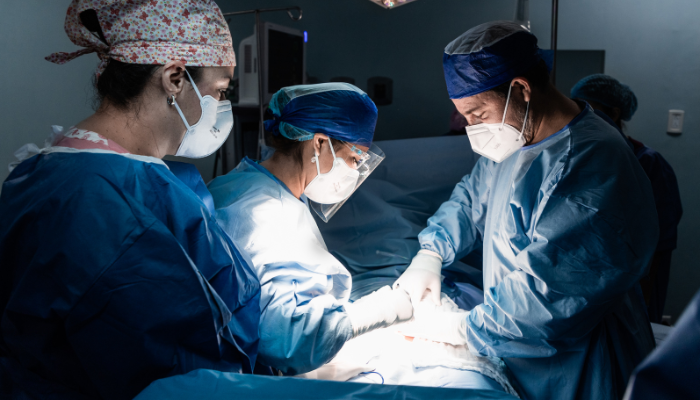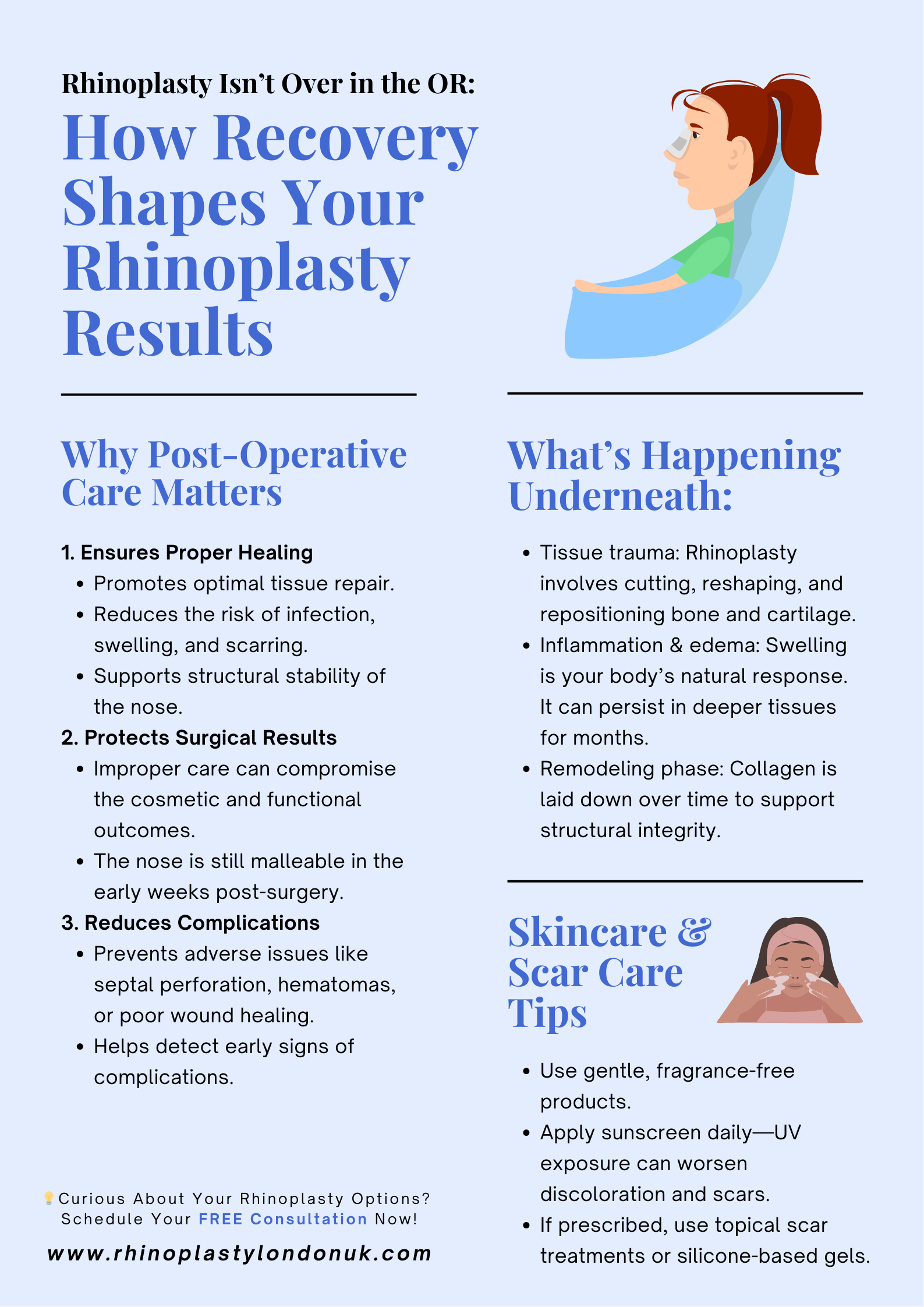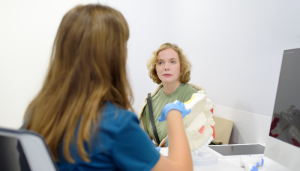Thinking about changing the shape of your nose but not sure how it all works? Open rhinoplasty is one of the most common and effective ways to do it—and no, it’s not as scary as it sounds. This method gives surgeons a clear view of your nose structure so they can make small, precise changes that lead to big results.
Maybe you want to smooth a bump, lift the tip, or improve breathing, this procedure might be what you’re looking for. In this post, we’ll break down exactly what happens during an open rhinoplasty—step by step—so you know what to expect and why it works.
Key Takeaways
-
Open rhinoplasty involves an external incision for better access to the nasal structures.
-
This procedure can address both cosmetic desires and functional issues like breathing problems.
-
Recovery may take several weeks, with swelling and bruising gradually reducing over time.
-
It’s crucial to have a detailed consultation with a qualified surgeon to discuss your goals and concerns.
-
Choosing an experienced surgeon is key to achieving the best results from your open rhinoplasty.
Understanding Open Rhinoplasty Procedure

Definition and Purpose
Open rhinoplasty is a surgical procedure designed to reshape the nose, and it’s often done to improve both how it looks and how well you can breathe.
The main difference between open and closed rhinoplasty is that open rhinoplasty involves a small incision on the columella (the bit between your nostrils). This allows the surgeon to lift the skin and have a much clearer view of the underlying structures.
Benefits of Open Rhinoplasty
Why might someone choose open rhinoplasty over other options? Here are a few reasons:
-
Precision: The open approach gives the surgeon a better view, which means more precise adjustments can be made.
-
Complex Cases: It’s often recommended for more complicated cases where significant reshaping is needed.
-
Functional Improvements: It’s not just about looks; open rhinoplasty can also fix breathing problems.
Ideal Candidates for the Procedure
Okay, so who is the ideal candidate for this type of nose job? Generally, it’s someone who:
-
Wants to change the size or shape of their nose.
-
Has breathing difficulties due to nasal structure.
-
Needs significant reshaping that a closed rhinoplasty can’t achieve.
It’s really important to have a good chat with a qualified surgeon to see if open rhinoplasty is the right choice for you. They’ll be able to assess your specific situation and give you the best advice.
The Surgical Process of Open Rhinoplasty
Preparation for Surgery
Before you get to the operating room, there’s a bit of prep involved. Your surgeon will give you a full rundown, but here’s the gist. You’ll likely need to avoid certain medications, like aspirin, for a couple of weeks beforehand, as they can increase bleeding.
Smoking is a big no-no too, as it hinders healing. You might also have to get some blood tests done, just to make sure everything’s in order. And, of course, you’ll have a detailed consultation with your surgeon to discuss your goals and expectations.
Anaesthesia Options
When it comes to anaesthesia, you’ve generally got two choices: local with sedation, or general anaesthetic. Local with sedation means you’ll be awake but relaxed and numb, while general anaesthetic means you’ll be completely asleep.
Your surgeon will recommend the best option for you based on the complexity of the procedure and your personal preferences.
Incision Techniques
Okay, so here’s where the ‘open’ part comes in. Unlike a closed rhinoplasty, an open rhinoplasty involves a small incision on the columella, which is the bit of skin between your nostrils. This allows the surgeon to lift the skin and have a really good view of the underlying bone and cartilage.
It might sound a bit scary, but honestly, the incision is usually pretty small and heals well. Once the surgery is done, the incision is carefully closed with sutures.
The beauty of the open approach is that it gives the surgeon maximum control and visibility, which can be really important for complex cases. It’s all about getting the best possible result for you.
Reshaping the Nasal Structure

Techniques for Reshaping
This is where the skill of the surgeon really shines. There are several techniques they might use, and it really depends on what needs doing. For example, if you’ve got a nose that’s a bit too big, they might remove some bone or cartilage.
On the other hand, if you need more structure, they might add some.
Use of Cartilage Grafts
Sometimes, just removing or adjusting the existing cartilage isn’t enough. That’s where cartilage grafts come in. These are basically little bits of cartilage taken from somewhere else in your body (usually the septum, ear, or rib) and used to reshape or support your nose.
It sounds a bit intense, but it’s actually quite common. The surgeon might use grafts to build up the bridge of your nose, refine the tip, or even just add some extra support to prevent collapse. It’s all about getting the structure just right.
Addressing Functional Issues
It’s not all about looks, you know. Open rhinoplasty can also fix functional issues, like a deviated septum that’s making it hard to breathe. If you’re having trouble breathing through your nose, this is something to discuss with your surgeon.
They can straighten the septum and reduce any projections inside your nose that are causing problems. It’s amazing how much better you can feel when you can actually breathe properly!
Fixing the way your nose works can be just as important as fixing the way it looks. It’s all about finding the right balance and making sure you’re happy with the results, both aesthetically and functionally.
Post-Operative Care and Recovery

Immediate Aftercare
The first few days are all about resting up and letting your body start the healing process. Expect to feel a bit groggy, especially if you had general anaesthesia. You’ll probably have some packing inside your nose and a splint on the outside for support.
-
Keep your head elevated, even when you’re sleeping. Prop up a few pillows to help reduce swelling.
-
Don’t be surprised if you see some blood and mucus. A drip pad will catch any drainage – just change it as needed.
-
Make sure someone can drive you home and ideally stay with you for a day or two. You might not be quite yourself right away.
Managing Discomfort and Swelling
Feeling some discomfort is all part of the process, but there are things you can do to make it more bearable. Swelling and bruising are also totally normal, especially around your eyes.
-
Stick to the pain meds your surgeon prescribed. Don’t try to tough it out; staying ahead of the pain is key.
-
Avoid anything that could increase blood flow to your face, like strenuous exercise or bending over.
-
Eat soft foods that don’t require a lot of chewing. You don’t want to put extra strain on your face.
Listen to your body. If something doesn’t feel right, don’t hesitate to call your surgeon’s office. They’re there to help you through this.
Long-Term Recovery Expectations
It can take several months, even up to a year, to see the final results. The swelling will gradually go down, and your nose will continue to refine its shape.
-
Avoid wearing glasses directly on your nose for at least four weeks. They can put pressure on the healing tissues.
-
Be extra careful in the sun. Too much sun can cause discoloration, so slap on some SPF 30.
-
Keep up with your follow-up appointments. Your surgeon will want to monitor your progress and make sure everything’s healing as it should.
Potential Risks and Complications
It’s important to be aware of the possible downsides of any surgery, and open rhinoplasty is no different. While most people have a smooth experience, knowing about potential risks helps you make an informed decision and spot any issues early on.
Let’s have a look at what could happen and how to deal with it.
Common Risks Associated with Surgery
Like any operation, open rhinoplasty comes with some general risks. These aren’t super common, but it’s good to know about them.
-
Excessive bleeding may occur during or after surgery, which will be managed by the surgical team.
-
There is a small risk of developing a serious blood clot, typically in the legs.
-
Infections, although rare, can happen and are generally treated with antibiotics.
-
Some individuals may experience an allergic reaction to the anaesthetic, prompting careful monitoring by anaesthetists during the procedure.
-
Your surgeon will thoroughly discuss these risks with you prior to your consent for surgery.
Signs of Complications to Watch For
After your rhinoplasty, keep an eye out for anything unusual. If you notice increased pain that doesn’t get better with medication, or if you have a high temperature, it could be a sign of infection.
Excessive swelling or bruising that seems out of proportion is also worth checking out. Difficulty breathing through your nose, especially if it’s new or getting worse, needs to be addressed. And, of course, if you’re just generally feeling unwell or something doesn’t seem right, don’t hesitate to contact your surgeon.
Consultation and Risk Assessment
Before you even book your surgery, you’ll have a detailed consultation with your surgeon. This is where they’ll assess your overall health, discuss your medical history, and examine your nose. They’ll also explain the specific risks that apply to you, based on your individual circumstances.
This is your chance to ask any questions you have and make sure you feel comfortable moving forward. A thorough risk assessment is a key part of making sure you’re a good candidate for open rhinoplasty and that you’re fully prepared for what to expect.
Remember, open communication with your surgical team is vital. If you have any concerns before or after the surgery, reach out to them. They’re there to support you and help you achieve the best possible outcome.
Achieving Desired Results
Having a clear idea of what’s achievable is really important. It’s not about aiming for perfection, but for improvement and harmony with your other facial features.
Your surgeon should discuss this with you in detail, showing you simulations and explaining the limitations of the procedure. Remember, everyone’s anatomy is different, and results will vary.
Understanding the Healing Process
Healing after rhinoplasty takes time, and it’s not always a straight line. There will be swelling, bruising, and maybe some discomfort. It’s important to be patient and follow your surgeon’s instructions carefully. Here’s a rough timeline:
-
Initial swelling: Most noticeable in the first few weeks.
-
Bruising: Usually fades within 1-2 weeks.
-
Subtle changes: The nose continues to refine over several months, even up to a year.
It’s easy to get caught up in the day-to-day changes, but try to focus on the bigger picture. The final result will be worth the wait.
Follow-Up Appointments and Care
Regular follow-up appointments are key to monitoring your progress and addressing any concerns. Don’t skip these! Your surgeon will assess your healing, provide guidance, and answer any questions you have.
They might also recommend specific aftercare treatments to help with swelling or scarring. Think of these appointments as a partnership in achieving the best possible outcome.
Choosing the Right Surgeon
First things first, you need to check their credentials. Make sure you choose a board-certified surgeon in plastic surgery or otolaryngology (that’s ear, nose, and throat). This means they’ve gone through years of training and have met rigorous standards. Don’t be shy about asking to see their certifications.
Questions to Ask During Consultation
Okay, you’ve found a few surgeons who look promising. Now it’s time for consultations. This is where you really get to know them and see if they’re a good fit. Here are some questions you should definitely ask:
-
How many open rhinoplasty procedures have you performed?
-
Can I see before-and-after photos of your previous patients?
-
What are the potential risks and complications of this surgery?
-
How do you handle complications if they arise?
-
What is your approach to achieving natural-looking results?
Don’t just listen to their answers; pay attention to how they make you feel. Do they seem confident and knowledgeable? Do they listen to your concerns and address them honestly?
Conclusion
Open rhinoplasty is a significant procedure that can greatly enhance both the appearance and function of the nose. If you’re considering this surgery, it’s essential to consult with a qualified surgeon who can guide you through the process and help you understand what to expect.
Remember, every individual’s journey is unique, and with the right support and information, you can achieve the results you desire. Don’t hesitate to reach out for more information or to schedule a consultation—taking the first step towards your ideal nose is just a call away.
Frequently Asked Questions
What is open rhinoplasty?
Open rhinoplasty is a type of nose surgery where a small cut is made at the base of the nose, between the nostrils. This allows the surgeon to see and reshape the inside of the nose more easily.
Why would someone choose open rhinoplasty?
People often choose open rhinoplasty because it gives the surgeon better access to the nose’s structure, which is helpful for making more complex changes.
How long does the surgery take?
The surgery usually takes between one and a half to three hours, depending on how much work needs to be done.
What should I expect during recovery?
After the surgery, you can expect some swelling and bruising. Most of this will go down in a few weeks, and you should see the final results after about 6 to 12 months.
Are there risks with open rhinoplasty?
Like any surgery, open rhinoplasty has risks, such as infection, bleeding, or scarring. It is important to discuss these with your surgeon before the procedure.
How do I choose a surgeon for open rhinoplasty?
When choosing a surgeon, look for someone who is board-certified and has experience with rhinoplasty. It’s also good to ask about their previous results and patient reviews.





